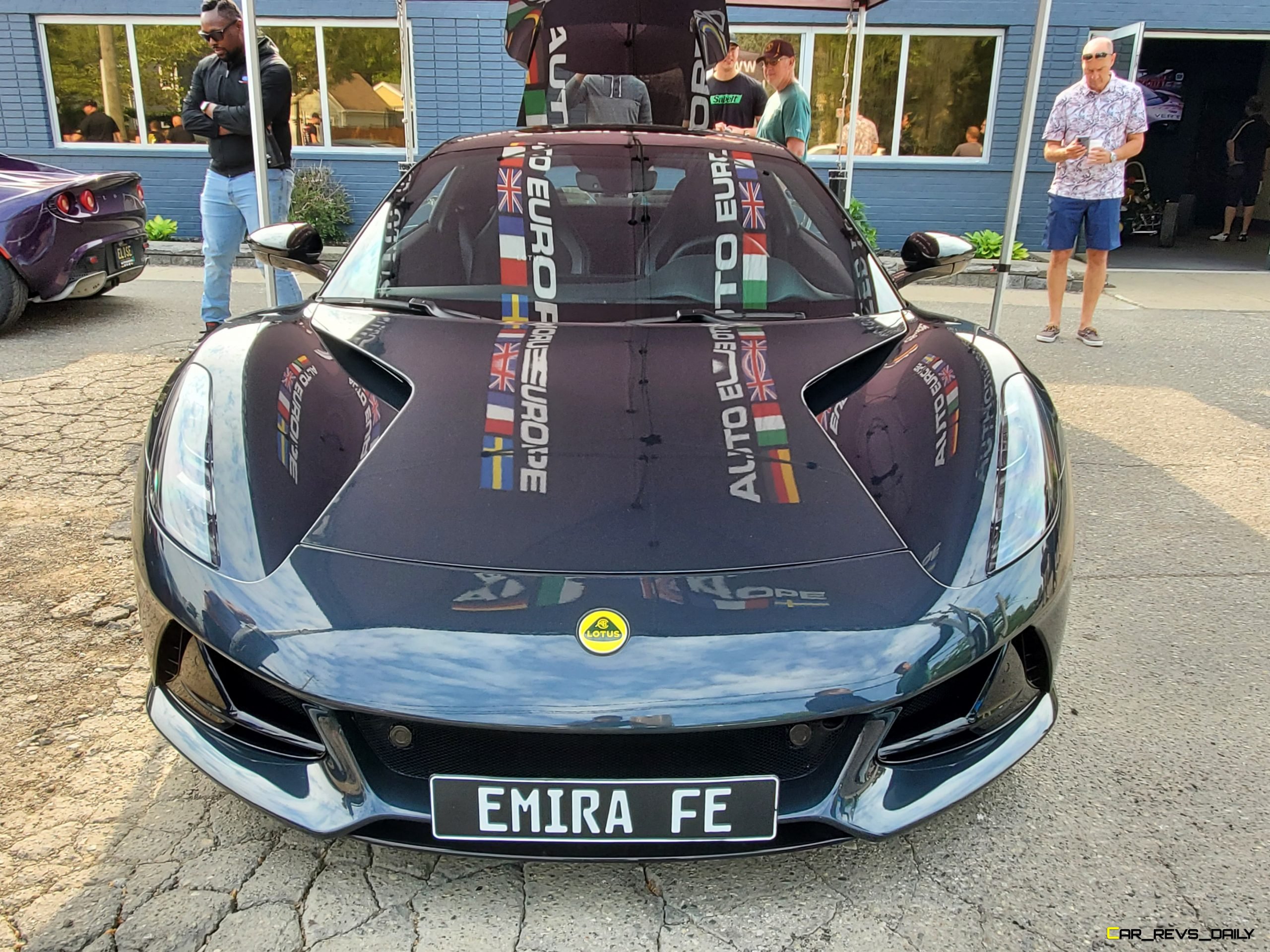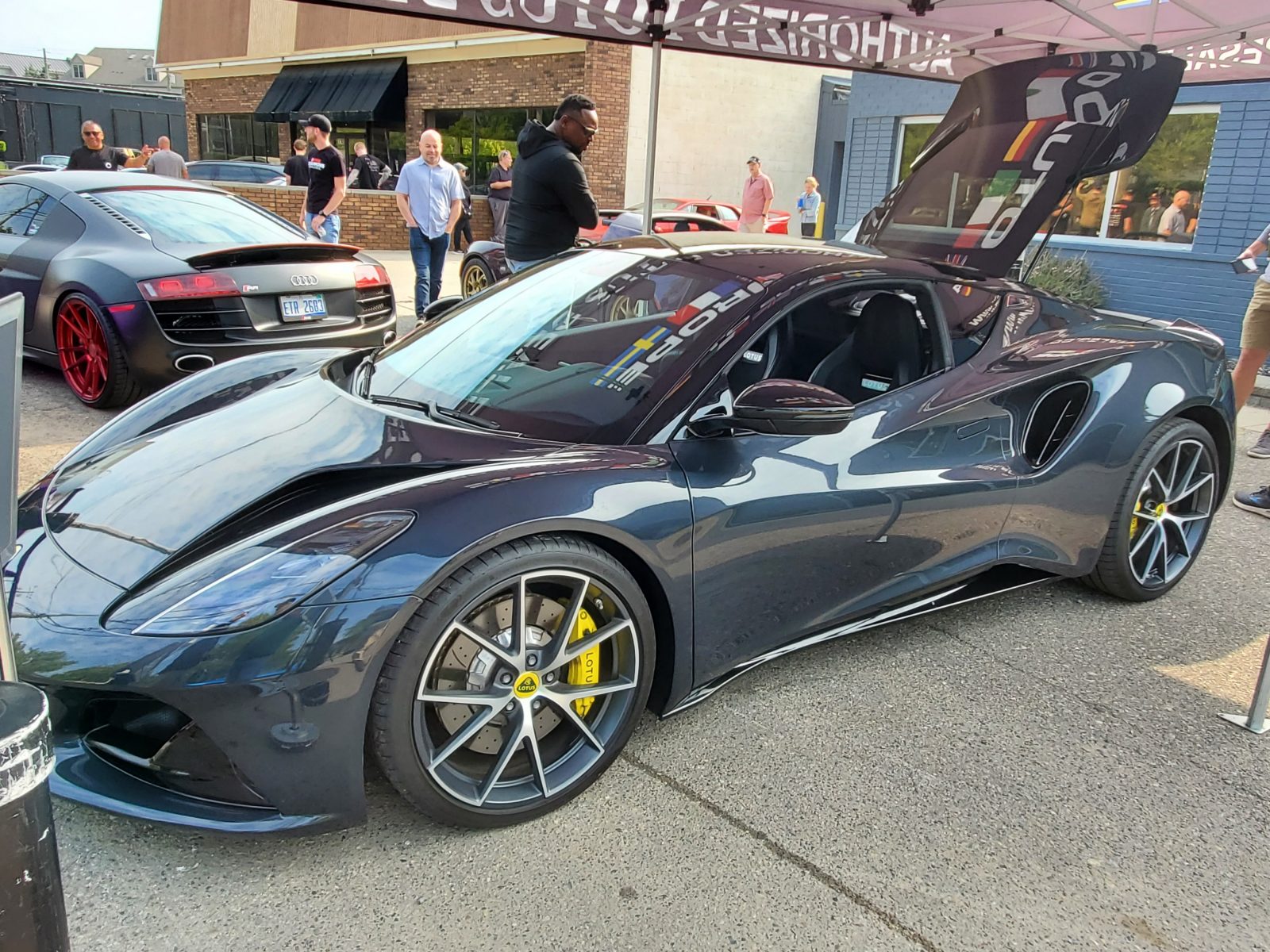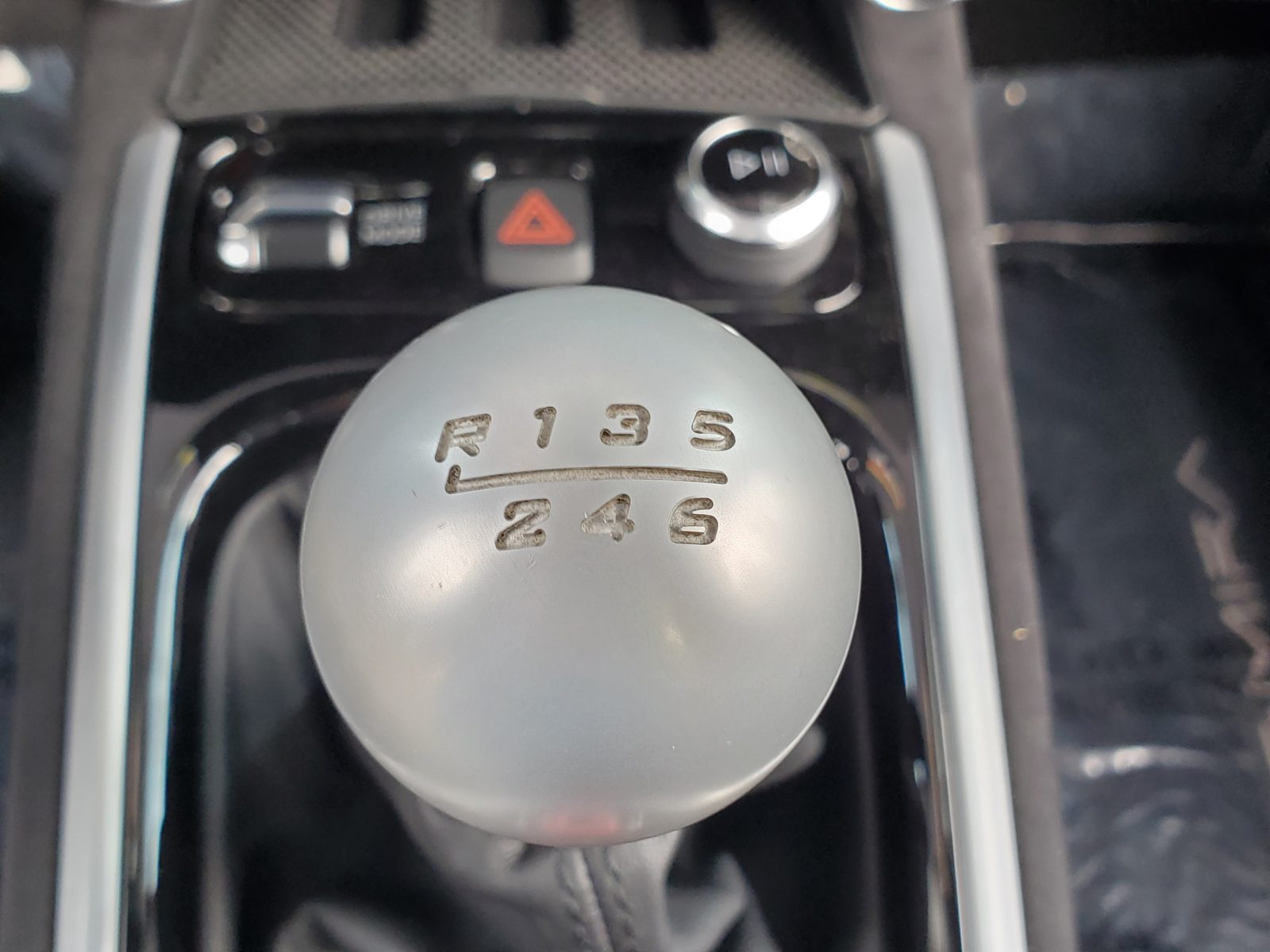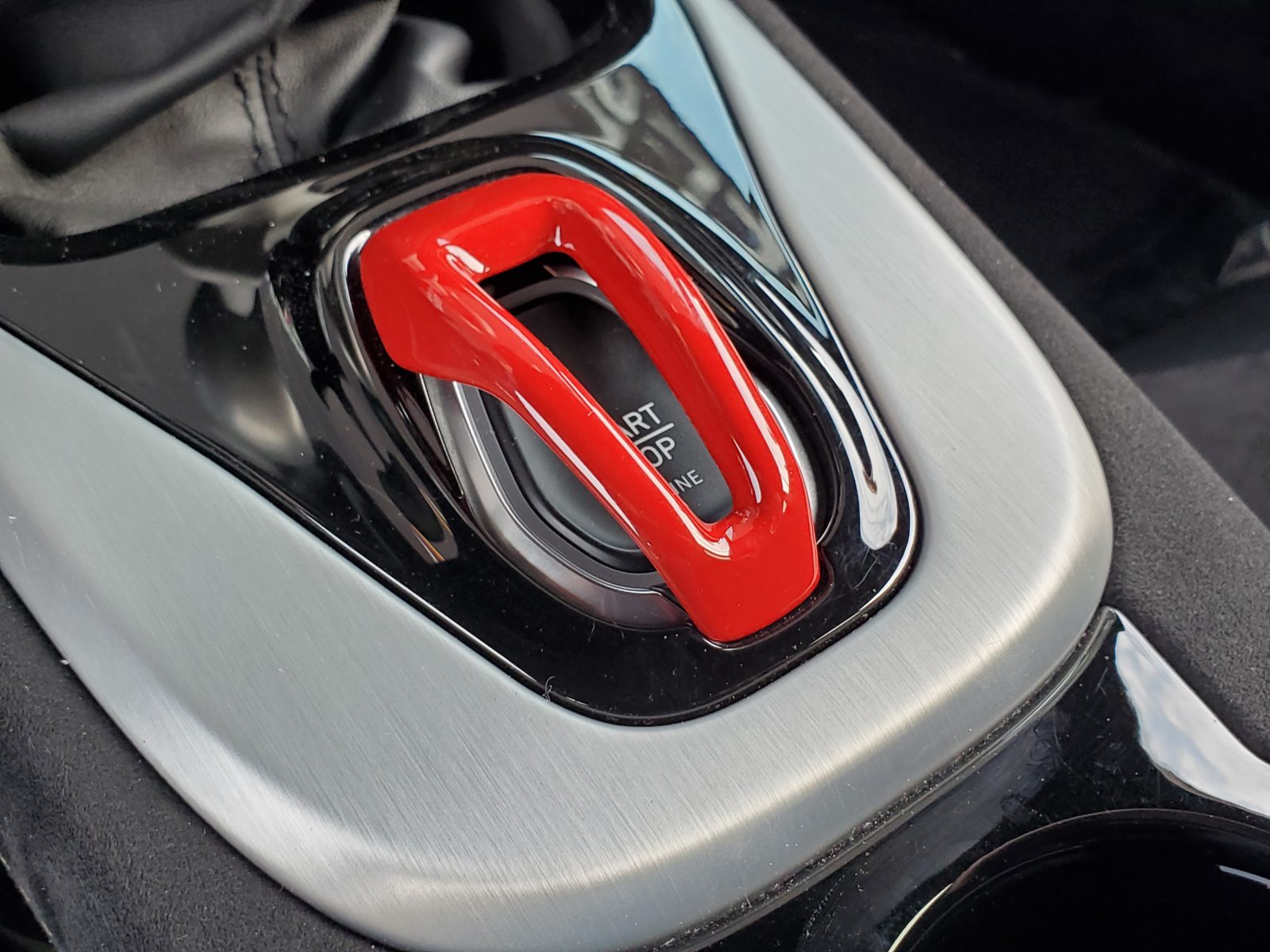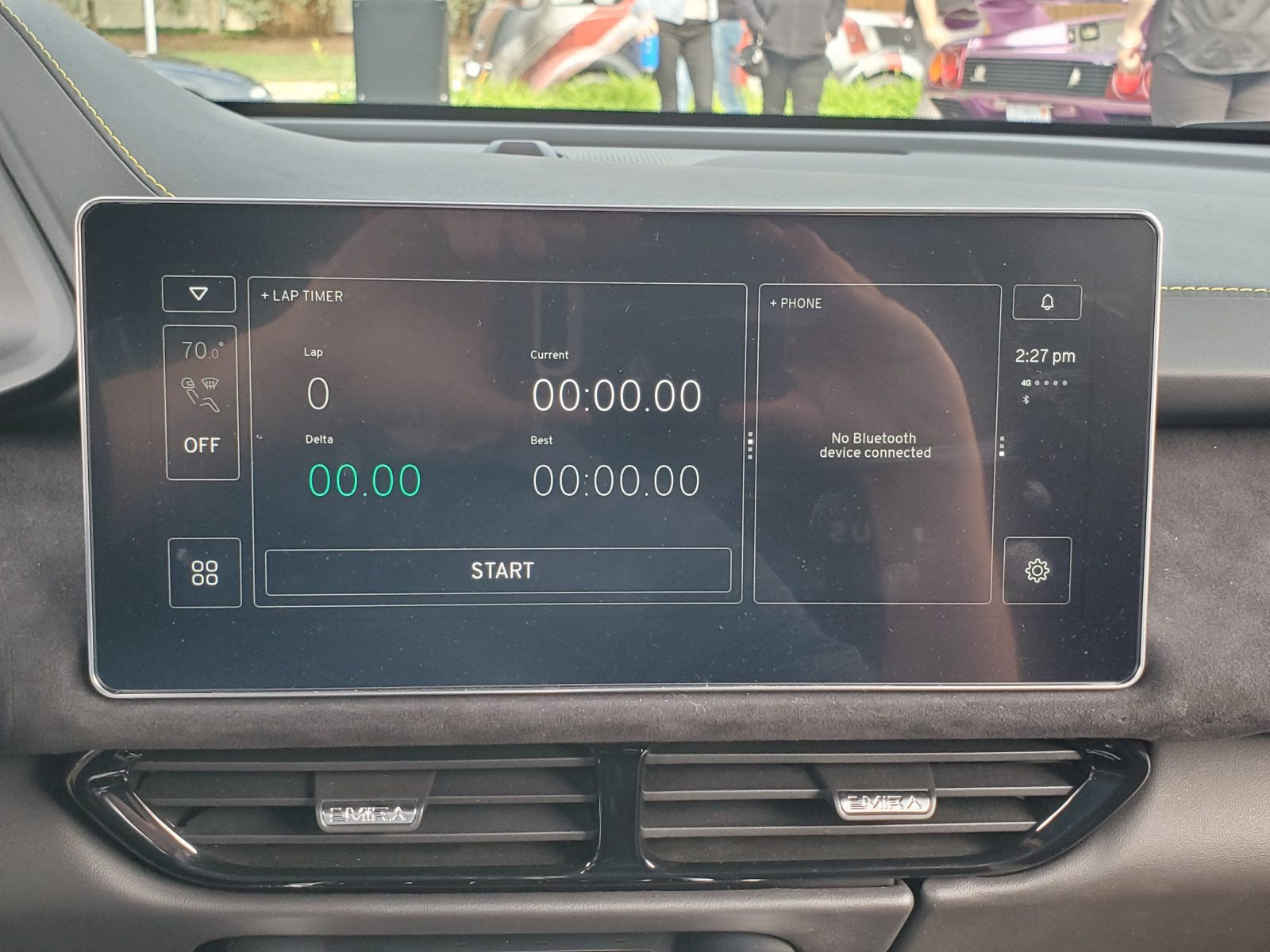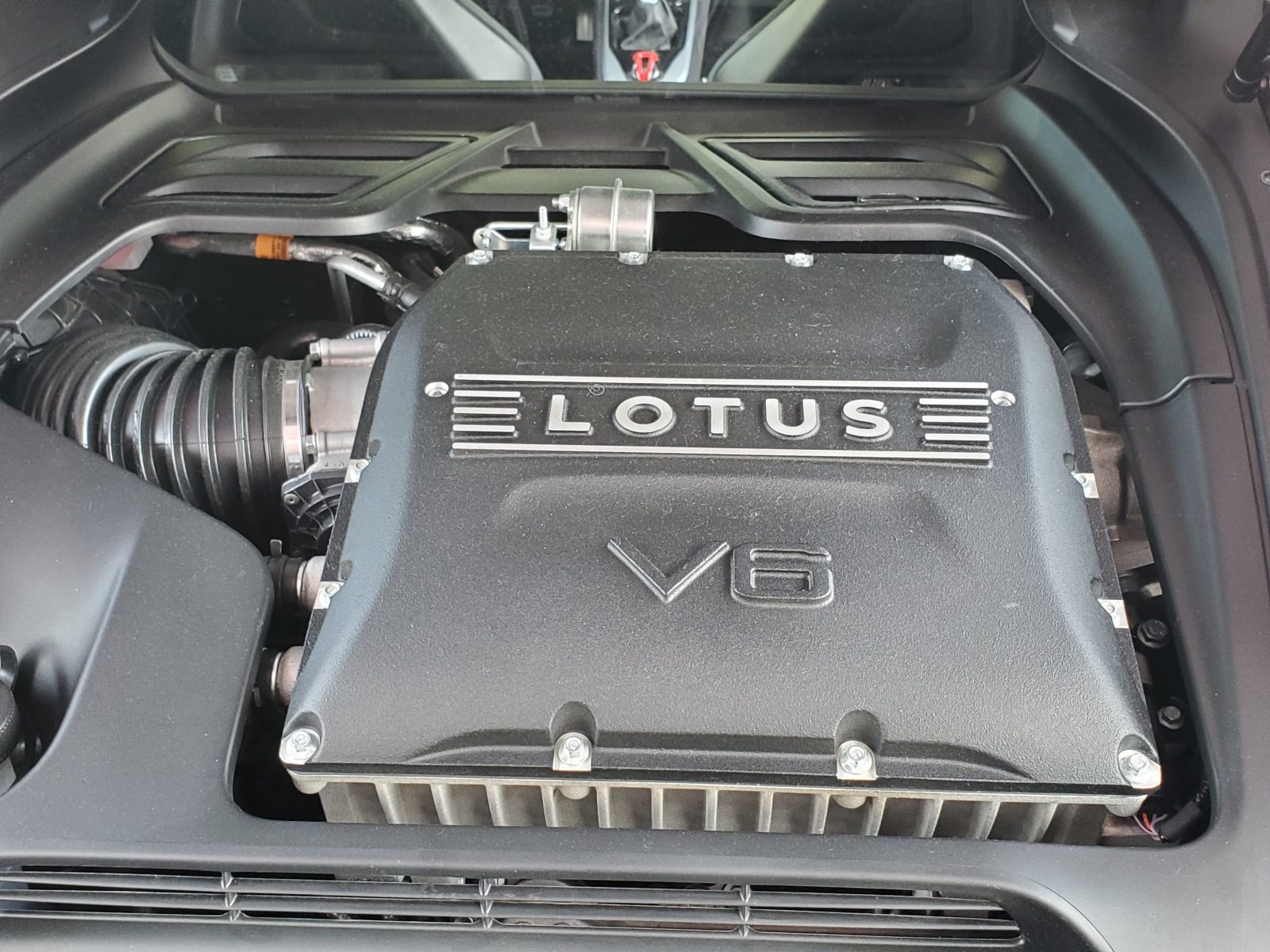The 2024 Lotus Emira is shifting things over at Lotus in multiple regards. The Emira is not only replacing the aging Evora in Lotus’s lineup, but it will also be the last ICE-powered Lotus to be offered before the British sports car maker fully switches over to BEV models only. We recently had a chance to spend some time with the Emira at a recent Cars & Coffee event at our local Lotus dealer, and we came away very impressed with what we saw during our brief encounter with Lotus’s newest sports car offering.
Emira Has Porsche In Its Crosshairs

One of the first things that many buyers will notice is the exterior styling of the Emira, which goes off in a radical but welcoming direction. Unlike the Evora GT and its anonymous-looking styling, the Emira’s design is heavily influenced by the Evija EV, with the car also inheriting the Evora’s bonded-aluminum architecture. The black-hued example Lotus had at Auto Europe in Birmingham, Michigan, helped highlight some of the balance and crispness that Lotus designers managed to inject into the Emira’s styling, especially in the front and sides of the car.
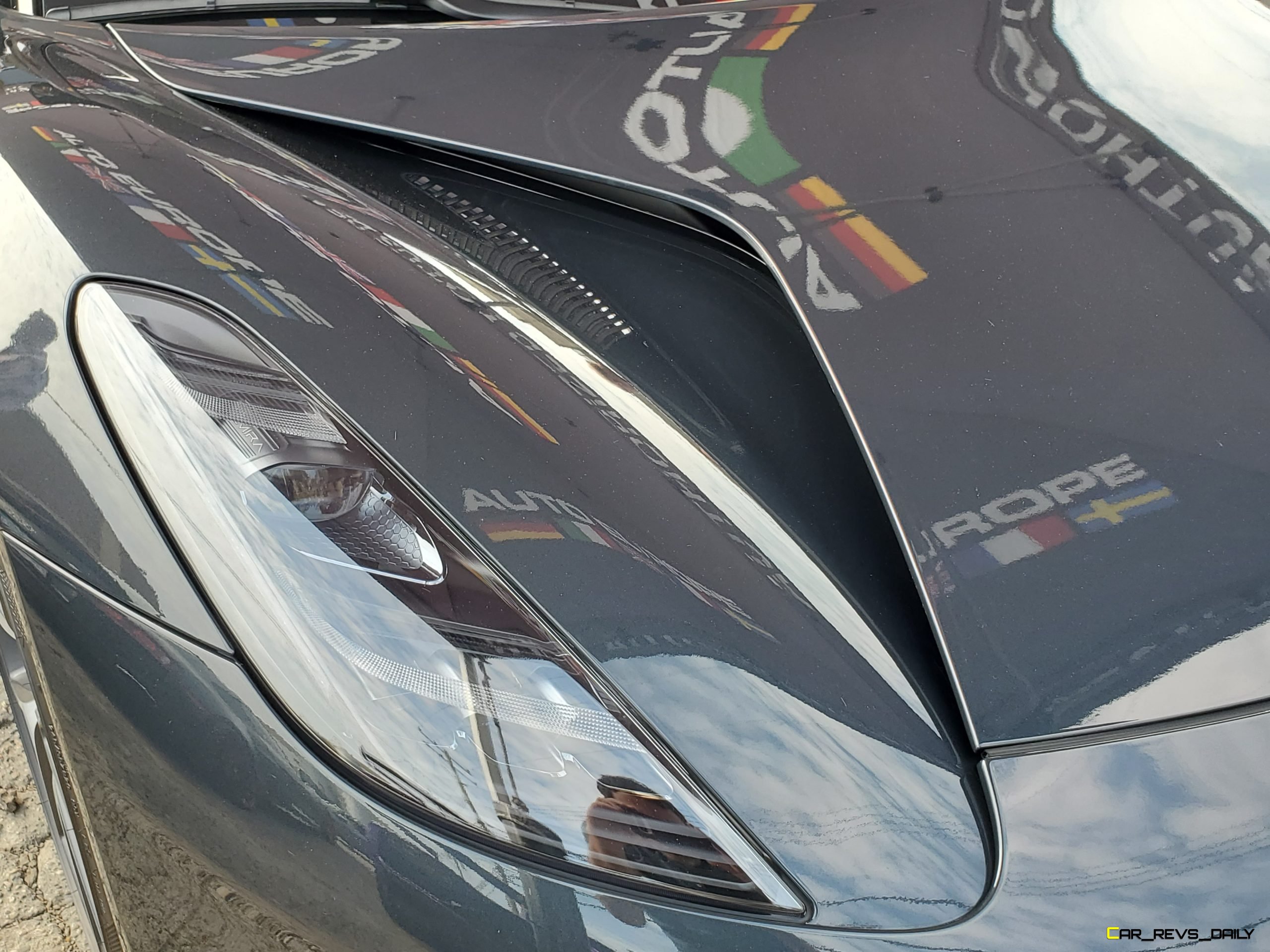
The side profile tapers down into the rear of the car, which incorporates a small integrated spoiler and sharp taillights to complete the package. Lotus revealed some time ago that the Emira will only be available as a coupe and currently has no plans for a roadster version for those that like to add open-air motoring to their sporty driving repertoire. That’s no big deal, especially since Lotus is clearly trying to appeal to as many sports car buyers as well, with the base Emira appealing to those that still miss the axed Lotus Elise while higher trims aim to lure in Evora buyers that would otherwise go to the local Porsche dealership.
Emira Now Has More Tech and Storage
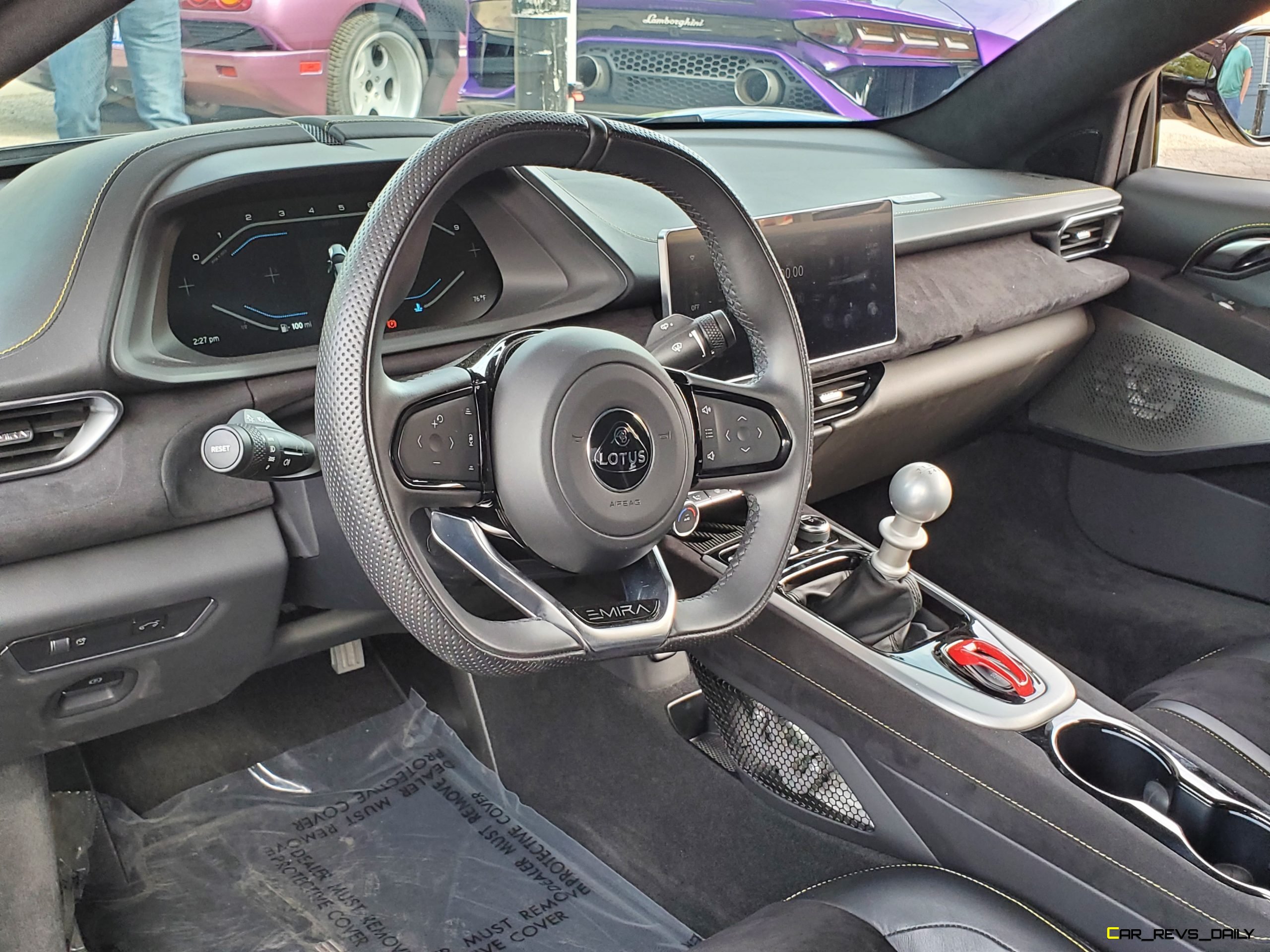
The interior of the Emira blends simplistic elements with pinches of minimalism that aim to drive home the point that this is a pure driver’s car. That means frills like wood trim are absent, but the Emira has stepped up its quality game with materials and plastics that are far better than what we have seen in past Lotus models. A 12.3-inch digital instrument cluster is standard, and the squared-off steering wheel fits nicely in the driver’s hands. Lotus also tried to improve usability for owners, and that included making the sills narrower and the door openings larger. A pair of cupholders are also welcome additions, and the integrated storage bins can hold small items or even a small water bottle. However, the Emira is not to be mistaken for your neighbor’s Toyota Camry, and grocery runs will undoubtedly be hampered by the seven cubic feet of space behind the seats, while a small storage space behind the engine adds 5 more cubic feet of usable space.

All Emiras will feature a 10.2-inch touchscreen infotainment system that bundles in Android Auto and Apple CarPlay, The stereo is adjusted either by voice or steering wheel-mounted controls, but we’re glad that Lotus left physical switches for the climate control systems and other key features. The seats in the Euro-spec example that Auto Europe had were comfortable, but we look forward to perhaps driving the Emira in the future to see how they fare with keeping drivers in place during sharp cornering.
Performance Covers Broad Spectrum Of Sports Car Segment
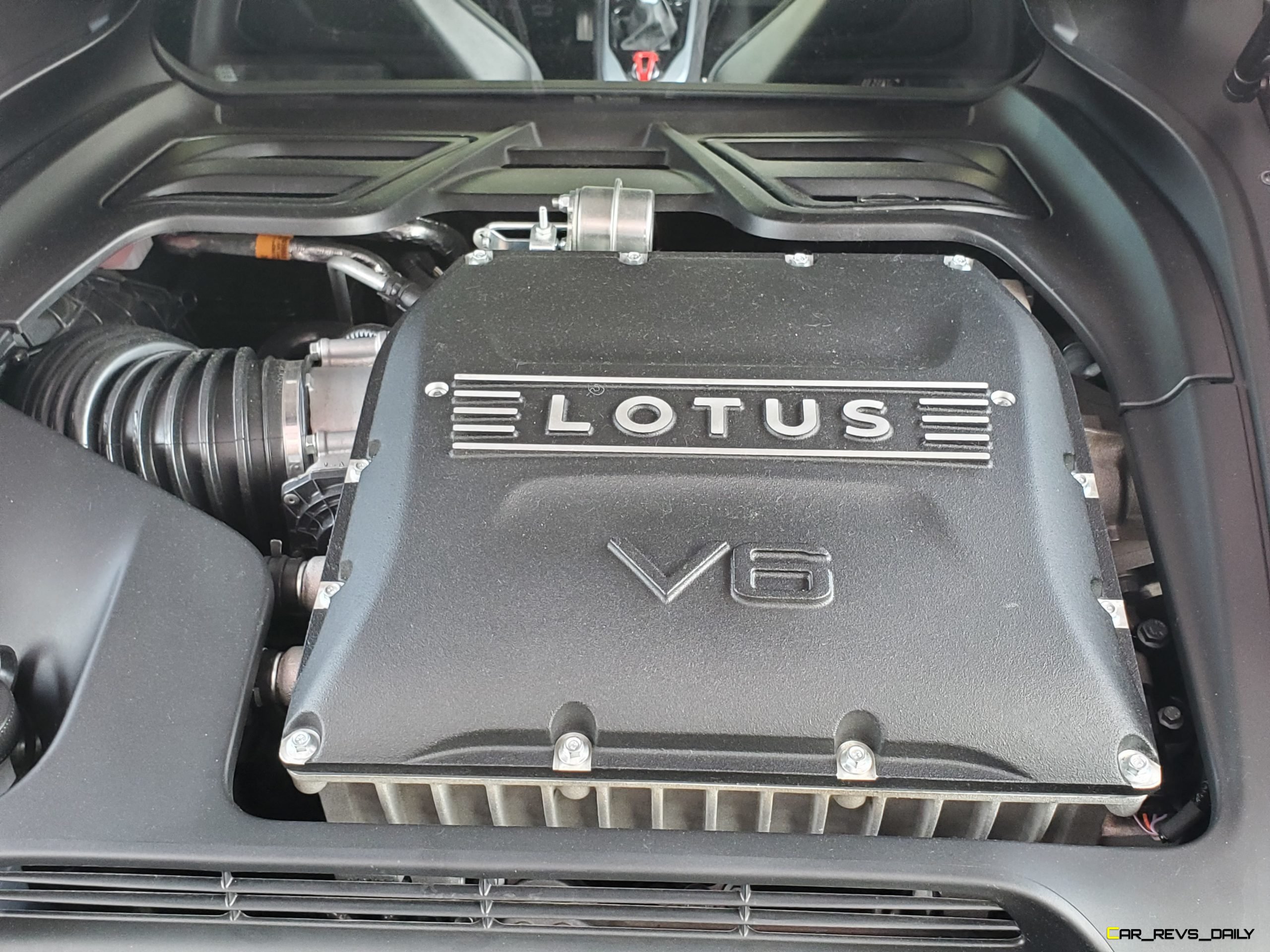
Performance for the Emira will come from a pair of engines, but buyers will definitely see some new names regarding the source material. Lotus was known for largely using Toyota-sourced engines for many of its older models, but base Emira’s will get a 2.0-liter turbocharged four-cylinder provided by Mercedes-Benz, which makes a healthy 360-horsepower and sends its power to the rear wheels through a dual-clutch automatic. Higher trims like our static example are powered by the Evora GT’s carryover Toyota-sourced 400-hp 3.5-liter V6 that’s paired with either the dual-clutch or a six-speed manual. The steering rack is an old-school hydraulic one that’s supposed to promote maximum levels of on-road feel when compared with modern electrically-assisted racks.

As mentioned, the Emira we experienced was a Euro-spec model, which meant it couldn’t be driven on U.S. roads. Thankfully, potential Emira customers won’t have to wait too long for the chance to drive one, with Lotus reps we spoke with confirming that the first wave of models will begin making their way to the U.S. later this year, with the bulk of them arriving early next year. When it does arrive, the Emira will compete with not only the 718 Boxster but also select versions of the 911.
We look forward to spending more time with the Emira in the future to find out if this Lotus can truly succeed in passing the baton of Lotus performance to the new generation of BEVs that the company plans to roll out over the next few years while also closing an era of performance for Lotus at the same time.

Carl Malek has been an automotive journalist for over 10 years. First starting out as a freelance photographer before making the transition to writing during college, his work has appeared on numerous automotive forums as well as websites such as Autoshopper.com.
Carl is also a big fan of British vehicles with the bulk of his devotion going to the Morgan Motor Company as well as offerings from Lotus, MG, and Caterham. When he is not writing about automobiles, Carl enjoys spending time with his family and friends in the Metro Detroit area, as well as spending time with his adorable pets.

